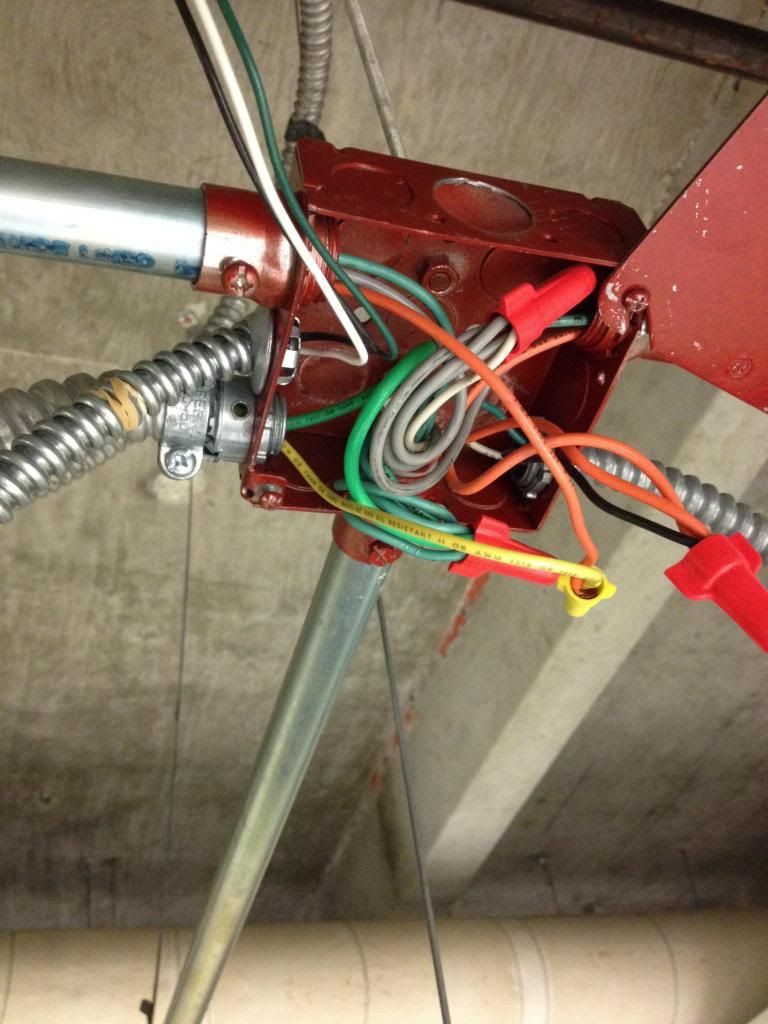chris kennedy
Senior Member
- Location
- Miami Fla.
- Occupation
- 60 yr old tool twisting electrician
Earlier this year is was swapping out a 400A 480V ATS at the largest shopping mall in Fl. Got knocked on my butt by the load neutral (literally) after opening all load, normal power and genny OCPD's and testing with two testers. After removing the load neutral from the ATS's neutral bus and scrapping myself off the floor, load neutral read 352V to ground.
Today at Miami International Airport I run into the same potential hazard. In the pic below you will see an FMC entering (bottom left) a 1900 box with an ungrounded conductor from normal power lighting PNL H1D with an EGC (330.3(B) maybe???:blink . Now top left you see a ?EMT leaving with the ungrounded conductor from PNL H1D and a grounded conductor from genny PNL EA. So what a surprise the guy changing this facilities ATS is gonna get. (I fixed it)
. Now top left you see a ?EMT leaving with the ungrounded conductor from PNL H1D and a grounded conductor from genny PNL EA. So what a surprise the guy changing this facilities ATS is gonna get. (I fixed it)

Today at Miami International Airport I run into the same potential hazard. In the pic below you will see an FMC entering (bottom left) a 1900 box with an ungrounded conductor from normal power lighting PNL H1D with an EGC (330.3(B) maybe???:blink

